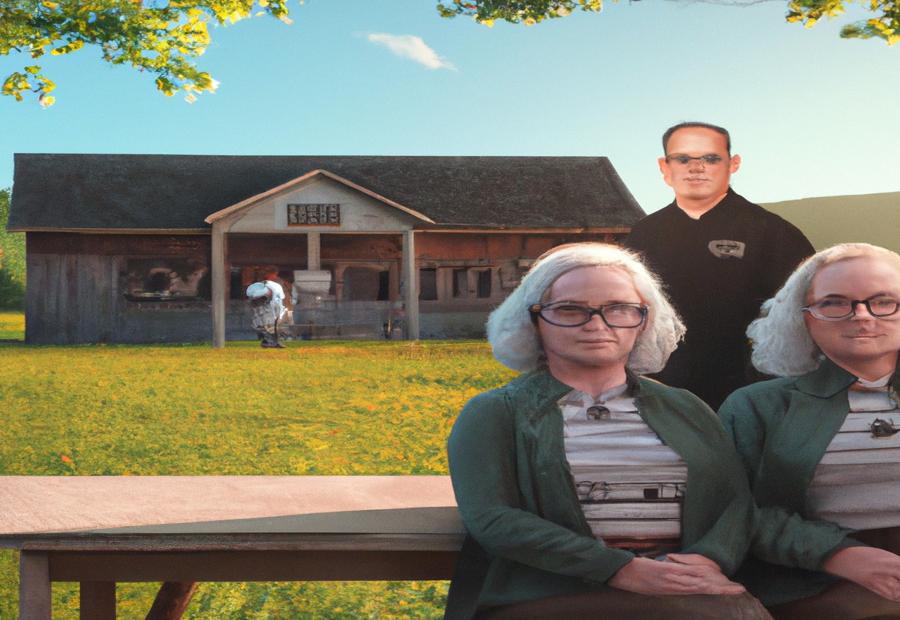Key Takeaway:
- Pennsylvania Public School Employees’ Retirement System (PSERS) is the largest public retirement system in Pennsylvania, established in 1917 to provide retirement and other benefits to public school employees in the state.
- New teachers who are eligible to enroll in the retirement plan can choose between the default Hybrid Plan, a combination of defined benefit pension plan and defined contribution plan with contributions from both the employee and employer, or the standalone Defined Contribution Plan, which allows the employee to contribute a portion of their salary to an investment account with employer contributions.
- Teachers hired before 2011 are enrolled in the traditional pension system which uses formulas based on years of experience and final salary to determine retirement benefits, rather than contributions and investment returns.
- PSERS has multiple benefit classes for teachers that determine the type of plan and how benefit provisions work.
- PSERS is classified as a governmental defined benefit plan, with the retirement benefit being determined by a guaranteed state-based formula including retirement factor, years of credited service, and final average salary. Full-time employees are required to contribute a percentage of their salary towards retirement benefits from the first day of employment, and the plan currently has nearly 256,000 active, 240,000 retired, and 26,000 vested inactive members as of June 30, 2020. The average yearly benefit paid to annuitants is $25,753.
- The cost of pensions in Pennsylvania and school district taxpayers will decrease in the upcoming fiscal year due to a rise in investment values and higher-than-expected public school hiring and pay increases last year, funded in part by federal pandemic funds. PSERS will need $5.19 billion from state and school district taxpayers to help fund the pension in fiscal year 2023-24, down from $5.31 billion received in the current fiscal year.
- The plan is facing a long-term deficit of more than $40 billion mostly to fund future pensions for teachers who worked between 2001 and 2011, a period during which lawmakers approved higher pensions. The pension fund currently holds $60 billion in assets as of February 2021.
- PSERS offers three retirement plans for active members who join on or after July 1, 2019. Class T-G is the default plan, which is a hybrid retirement plan with both a defined benefit and a defined contribution component, offering the highest monthly benefit with the least risk for those who spend their careers in public education. Members have the option to switch to one of the two optional retirement plans and will be notified and given a specific date to respond.
Overview of Pennsylvania Teachers Retirement System
Photo Credits: Bizstone.Com by Jacob Williams
Pennsylvania Teachers Retirement System is one of the largest and most financially sustainable pension plans in the United States. Established in 1917, it provides retirement, disability, and survivor benefits to over 500,000 public school employees and their families. The system is funded by contributions from employees, employers, and investment returns, and is administered by a Board of Trustees appointed by the Governor. The system’s assets are invested in a diversified portfolio, which includes stocks, bonds, and real estate. Overall, the Pennsylvania Teachers Retirement System plays a crucial role in ensuring the financial security of the state’s public school educators and their families.
History and Purpose
The Pennsylvania Teachers’ Retirement System (PSERS) is all about providing retirement benefits to teachers and school employees. It manages assets of the pension fund, and ensures members get the benefits they’ve earned. To do this, PSERS administers different plans, like a traditional defined benefit plan for those hired before 2011 and hybrid/defined contribution plans for new hires.
PSERS wants to make sure the retirement options are up-to-date with modern employment trends, so the hybrid plan structure for new hires, starting in July 2019, combines elements of defined benefit and defined contribution plans. This lets new teachers have portability if they need to stop working earlier. And, it links future member/employer contributions to market performance, which helps with budgeting in uncertain times.
For Pennsylvania teachers, PSERS needs to be carefully managed. Eligible members are put into five benefit classes (T-C to T-G), based on hire date and plan participation. PSERS wants to give fair, sustainable retirement benefit options for the long haul.
Structure and Administration
The Pennsylvania Teachers Retirement System (PSERS) is run by a 15-member board of trustees. This board includes seven educators, two school board members, one intermediate unit representative, three gubernatorial appointees, and the state treasurer. PSERS is regulated by the government and provides various retirement plans for teachers. These include the Hybrid Plan for new educators, Defined Contribution Plan for new hires, and Traditional Pension System for instructors hired before 2011. They each have different contribution rates and eligibility criteria, with only employer contributions required for the Defined Contribution Plan.
Benefit classes in PSERS are divided by teacher‘s start date and retirement plan. These are T-C, T-D, T-E, T-F, and T-G. Despite facing a long-term deficit in recent years, PSERS has taken steps to lower costs for taxpayers by changing membership requirements and benefit calculations.
PSERS is devoted to delivering retirement benefits to over 200,000 active members and retirees while preserving financial security for the future.
Retirement Plans for Pennsylvania Teachers
Photo Credits: Bizstone.Com by William Hernandez
Pennsylvania teachers have multiple retirement plan options available to them. Each plan is tailored specifically to certain groups of teachers, including new teachers and those hired before 2011. In this section, we will explore the retirement plans available for Pennsylvania teachers, which include a hybrid plan for new teachers, a defined contribution plan for new hires, and the traditional pension system for teachers hired before 2011.
Hybrid Plan for New Teachers
The Hybrid Plan for New Teachers in Pennsylvania is a retirement plan created for new teachers. It combines two types of plans: a defined benefit plan and a defined contribution plan. Its goal is to provide new teachers with the chance to make their own savings and get pension benefits.
The Hybrid Plan is only available for new hires who enrolled with PSERS on or after July 1, 2011. When they have a job in an eligible position and become members of PSERS, they can join the plan. Members must give 7.5% of their salary and employers must give 4.92%. This plan offers members pension payments and contributions to a personal retirement savings account.
Unlike the Traditional Pension System before 2011, which calculated pension income based on their final average salary and years of service, the Hybrid Plan gives members more flexibility to build savings. Members can make personal account contributions linked to market performance and build their own retirement savings.
The Hybrid Plan is meant to fix long-term deficits faced by traditionally funded pensions, creating stability, predictability, and consistency with employer contributions. It balances future liabilities associated with member pensions into equal periods, directing employer contributions towards payment obligations from the prior year.
The Hybrid Plan ensures retirement eligibility. Even the Grim Reaper can get a job with PSERS and have a comfortable retirement.
Eligibility and Enrollment
Pennsylvania Teachers Retirement System (TRS) has rules for teachers to enter their retirement plans. New teachers need to fill an application, pass a medical exam, and enrol within 90 days. The Defined Contribution Plan is open to all new hires – they must enrol within 30 days of the start date.
If a teacher was hired before 2011, they must have at least 5 years of credited service to get retirement benefits. For members of Class T-G, they are automatically enrolled in the hybrid plan. They can switch to another plan within 120 days after being hired.
It’s important for teachers to know the eligibility criteria and enrol on time to get retirement benefits. Investing in one’s future is smart – although it may seem intimidating.
Benefits and Contributions
PSERS offers eligible members a choice of retirement plans. These plans can include financial aid post-retirement, and a mix of funds from both employees and employers.
The Hybrid Plan is an option for new teachers, which has both defined benefit and defined contribution components. Also available is the Defined Contribution Plan, which new hires may select as their primary retirement plan. The Traditional Pension System is for teachers prior to 2011, providing them with pension payments after retirement. Benefit Classes are based on tenure, service, and age, while Optional Retirement Plans allow teachers to opt-out of the Hybrid Plan, with varying benefits and contributions offered.
Full-time employees must participate in PSERS’ pension fund program, but part-time workers may contribute to their retirement funds using PSERS-Participating Employer Retirement Account (PERA).
Additionally, PSERS has details on membership eligibility, assets, and recommendations from a bi-partisan commission. This commission suggested reducing the discount rate and setting up an independent investment review board to provide guidance to PSERS trustees.
Defined Contribution Plan for New Hires
The Pennsylvania Teachers Retirement System (PSERS) presents a retirement option for new hires called the Defined Contribution Plan for New Hires. This plan enables both employee and employer to put money into personal accounts, granting portability benefits for employees. Eligible new hires can join the plan once they get hired full-time by a participating PSERS employer. They can pick to contribute a certain percentage of their salary on a pre-tax basis or via after-tax payroll deductions, while employers put in a set percentage to each employee’s account.
It is essential to know that distinct from traditional pensions, this retirement plan does not promise a particular amount of benefit each month at retirement. Instead, the benefit amount available depends on an employee’s account balances and investment profits.
Hence, employees must take into account their personal financial circumstances and objectives when settling on their investment selections and the amount of their contributions. PSERS offers employees access to financial wellness tools and investment education materials provided by their vendors to help them make educated choices.
To finish, the Defined Contribution Plan for New Hires by the Pennsylvania Teachers Retirement System provides a convenient way of saving for retirement. It comprises both employee and employer contributions into individual accounts that come with portability benefits. The final benefit amount at retirement will depend on singular account balances and investment performance over time.
Eligibility and Enrollment
Getting a retirement plan with the Pennsylvania Teachers Retirement System requires meeting certain criteria. It differs depending on the plan. Also, full-time teachers must enroll in one of the available plans.
For the Hybrid Plan (Class T-G), new teachers enroll automatically when they start working at a participating institution. Both the employee and their employer contribute a percentage of each paycheck.
The Defined Contribution Plan (Class T-E) is optional for new hires. They must enroll within 60 days of starting. Employee contributions are voluntary and can be adjusted.
Retirement plans for pre-2011 staff have different conditions. For example, the Traditional Pension System (Class T-A) was automatic for full or part-time staff.
The eligibility and enrollment requirements depend on the chosen class. Yet, they always need to meet predetermined criteria first.
Don’t forget to save for retirement, even if you’re a Pennsylvania teacher with a pension plan named after you.
Benefits and Contributions
Pennsylvania Teachers Retirement System provides different retirement plans based on enrollment status and employment dates. These include:
- The Hybrid Plan for New Teachers requiring both employer and employee contributions. Members can choose to contribute from 1%-10% of their salary. It has DB and DC features offering portability, flexibility, and annuities. To qualify, members must enroll in one of the five PSERS-sponsored classes.
- The Defined Contribution Plan for New Hires.
- The Traditional Pension System for Teachers before 2011.
The Hybrid Plan is a combination of defined benefit and defined contribution plans, and requires both employer and employee contributions. Members can choose to contribute from 1%-10% of their salary. It offers portability, flexibility, and annuities. To qualify, members must enroll in one of the five PSERS-sponsored classes.
Class T-F members need to decrease contribution amounts four years prior to retirement. This allows them to get premium joint survivorship annuities. These pay out monthly settlements after their beneficiary’s Tier surviving widow/er exits.
Before 2011, teachers coming to retirement had a traditional pension plan, known as the Traditional Pension System. Organizations with growing workforces have used DPMM data metrics for over three decades to help manage debt statuses and avoid long-term deficit potentialities. Local taxpayers’ dollars cover all expenses.
Traditional Pension System for Teachers Before 2011
Before 2011, the primary retirement plan for Pennsylvania teachers was the traditional pension system. It offered a defined benefit with a fixed amount of money each month in retirement. To be eligible, teachers needed to be 60 and have 35 years of credited service, or 62 and have 3 years of credited service. Active participants had to contribute a percentage of their salary to the plan each paycheck.
The state acted as a fiduciary, ensuring all pension benefits were fully funded. They provided funding by making employer contributions on behalf of the members into the pension fund’s investments. Members retiring under this plan could increase their monthly benefit amount by working past their normal retirement age or by selecting delayed payment options.
Eligibility and Enrollment
The Pennsylvania Teachers Retirement System (PSERS) offers various retirement plans. Generally, full-time teachers or admin staff can join. Enrollment is automatic for full-time staff and starts on the date of hire. It depends on which plan they choose.
- The Hybrid Plan enrolls new teachers who don’t have creditable service in other state-administered retirement systems.
- The Defined Contribution Plans let new hires join within a set time frame.
- For the Traditional Pension System, only those hired before 2011 can join and must have at least 10 years of credited service to be vested and receive pension benefits.
It is important to understand the enrollment process and eligibility requirements of PSERS.
Benefits and Contributions
PSERS takes care of its teachers by offering them various retirement plans. New teachers have the choice between a hybrid plan or a defined contribution plan. The Hybrid Plan blends traditional pensions and defined contribution plans, while the Defined Contribution Plan allows members to pick their own investments. Those in the Traditional Pension Plan before 2011 are still eligible for it.
PSERS has different classes of members for their retirement plans, such as Class T-C, T-D, T-E for non-teaching employees, and T-F. In 2019, the new hybrid tier was introduced, Class T-G.
The long-term deficit of the PSERS Pension Fund raised concerns among CFOs. In 2020, bipartisan committee recommendations were made to address these worries. Despite the challenges, PSERS is committed to providing dependable retirement plans with valuable benefits and contributions.
Benefit Classes for Pennsylvania Teachers
Photo Credits: Bizstone.Com by Mark Lewis
As Pennsylvania teachers, it is essential to be aware of the different benefit classes that are available as part of the Pennsylvania State Employees’ Retirement System. In this section, we will take a closer look at the five benefit classes, namely Class T-C, Class T-D, Class T-E, Class T-F, and Class T-G, and understand what each one offers to teachers in Pennsylvania.
Class T-C
Class T-C members of the Pennsylvania School Employees’ Retirement System must meet certain criteria to be eligible for retirement benefits. They must have been teachers prior to Jan 1, 1977 and enrolled in the system on Dec 31, 1975. Plus, they must also have accrued at least ten years of credited service.
The monthly retirement benefit for Class T-C members is calculated based on their final average salary and credited service, which is different than other benefit classes.
Surviving spouses or designated beneficiaries of a Class T-C member can receive income through a survivor annuity if the member passes away.
Pennsylvania has different benefit classes for teachers. Each has its own eligibility requirements and benefits. It’s important for teachers to know their class and entitlements to get the most out of their retirement system.
Class T-D
Class T-D is a retirement benefit package designed for qualified teachers. It’s based on their years of service and final average salary. With 30+ years of service, teachers can get 100% of their salary. And, those with less than 30 years of service can still get proportional benefits ranging from 1.25-2% per year.
Eligibility criteria exist for Class T-D. To qualify, teachers must have been PSERS members before Jan 1, 2001. Plus, they must have reached age 65 or have at least 35 years of credited service. Continuing to work beyond these requirements won’t add any additional credited service towards retirement.
Teachers should understand the details of their plan to make informed decisions about retirement. Also, they should keep up-to-date with changes or improvements in the pension plans. In the end, Class T-D is an excellent retirement plan for eligible teachers, providing them with well-earned financial security.
Class T-E
Class T-E is a retirement program specifically for teachers who were enrolled before January 1, 1999. It uses a percentage formula to calculate retirement benefits. It also provides survivor benefits to dependents if the member passes away. However, it does not offer medical insurance coverage. But, members may be eligible to participate in MEABT if they meet certain criteria. On the PSERS website, members can access their retirement account info, update personal details and calculate estimated pension.
On the other hand, Class T-F offers teachers the option of a hybrid plan or a defined contribution plan. This provides a versatile retirement plan with various benefits to choose from.
Class T-F
In Class T-F, teachers who qualify receive monthly pension payments. This is based on the amount of years they have taught and their average salary. It’s calculated by multiplying years of service credit by a percentage and the final average salary. But, sadly, there is no death benefit for beneficiaries if the member passes away. Even though the number of members decreased, some still chose Class T-F after Class T-G replaced it in 2001. Retired members may buy an annuity that gives them a death benefit.
Unfortunately, the Plan was not correctly managed, which led to deficits. This may cause problems for members who thought they would get full payments and schools having trouble paying. The Plan’s administrators must take action to make sure all members get what they deserve.
Class T-G is the default plan for Pennsylvania teachers. It provides a traditional pension and a 401(k) plan. It’s important for teachers to think about their options and pick the plan that fits their needs best.
Class T-G
If you haven’t chosen an optional retirement plan and you’re an active member, you might be suitable for Class T-G. This class offers employee contributions of 7.50%. Employer contributions are 34.74%. You can also get a guaranteed monthly annuity when you reach normal retirement age or when you retire early.
What makes Class T-G special is that new hires are put into the default hybrid plan unless they choose to opt-out or select an optional retirement plan in the first six months of their employment.
The Pennsylvania Teachers Retirement System manages the pension fund of Class T-G and other benefit classes. According to PSERS, as of June 2020, their assets total $64.3 billion.
Details about the Pennsylvania Public School Employees’ Retirement System
Photo Credits: Bizstone.Com by Elijah Robinson
The Pennsylvania Public School Employees’ Retirement System (PSERS) is a crucial matter for teachers in Pennsylvania. In this section, we will delve into the calculation of retirement benefits as well as the requirement of full-time employees to become members. Furthermore, we will examine the recent reduction in pension expenses for taxpayers, while acknowledging the system’s long-term shortfall and CFO caution.
Determination of Retirement Benefits
Retirement benefits for Pennsylvania teachers depend on different factors: the retirement plan that the teacher picks, their years of service, and their final average salary. The Pennsylvania Public School Employees’ Retirement System (PSERS) is responsible for deciding and managing these benefits.
We have a table to help understand the determination of retirement benefits:
| Factors | Description |
|---|---|
| Retirement Plan | Choose between a traditional defined benefit plan or a hybrid plan, combining elements of both defined benefit and defined contribution plans. |
| Years of Service | Number of years contributing to PSERS. |
| Final Average Salary (FAS) | Average of the highest three years of salary in the last 10 years before retirement. |
PSERS uses these factors to calculate the monthly benefit amount a teacher will get upon retirement. This guarantee is protected by the law, not subject to market changes.
It’s noteworthy that PSERS uses actuarial assumptions. These assumptions can change over time due to economic conditions or other reasons. It’s best for teachers to have regular reviews of their benefits statements, and seek advice from financial professionals for adequate retirement preparation.
The history began in 1917 when the state Legislature set up pension systems for Pennsylvania’s public school employees. Changes over time have been made to improve funding levels and provide better retirement security. Now, PSERS still gives valuable benefits to members while balancing taxpayer needs and long-term sustainability.
If you’re a full-time employee in Pennsylvania, retirement planning isn’t optional – it’s compulsory!
Mandatory Membership for Full-Time Employees
In Pennsylvania, full-time public school employees must join the Pennsylvania Teachers Retirement System (PSERS). This includes eligible educators and non-teaching staff. Both the employee and employer must contribute to the pension plan. Employees pay a percentage of their salary and employers match it.
In Colorado, full-time employees are those who work over 30 hours per week or have a contractual relationship with the school system. Part-time employees may opt into the plan voluntarily.
Intermediary positions must also join the PSERS Pension Fund. Unfortunately, this Fund has faced some issues. Governance problems, changing laws, and long-term deficits have caused financial instability, according to bi-partisan commissions.
Decrease in Cost of Pensions for Taxpayers
PSERS, the Pennsylvania Public School Employees’ Retirement System, is tackling the high cost of pensions for taxpayers. To do this, they’ve made several changes, like raising employee contributions and changing the vested period for new hires.
One way they’ve done this is by introducing new categories for plan eligibility. Those who choose the defined-contribution plan will pay more from their salary for retirement than those who go with a hybrid plan. This shifts some of the expense to teachers, saving taxpayers money.
All members must now contribute to the retirement fund. This guards against market volatility, and keeps costs from going up.
PSERS still has a long-term deficit to address, though. The CFO warned of it, and a bi-partisan commission has identified areas where more improvement can be made, like investing more and becoming more sustainable.
The PSERS Pension Fund remains committed to providing sustainable retirement benefits for teachers, while also reducing the burden on taxpayers. In short, Pennsylvania teachers can retire on a hybrid plan – but steps are being taken to reduce the deficit and keep benefits sustainable.
Long-Term Deficit and CFO Warning
The Pennsylvania Teachers Retirement System (PSERS) is struggling financially. The CFO’s warning and the looming long-term deficit prove this. There is a shortfall in assets, which could affect retirement benefits for PSERS members.
PSERS is trying to improve their finances. They are cutting costs and asking members to pay more. But, surprisingly, as of March 2021, the Pension Fund was still valued at an impressive $59 billion.
Facts about PSERS Pension Fund
Photo Credits: Bizstone.Com by Raymond Ramirez
With the Pennsylvania teacher retirement system being a hot topic recently, let’s delve into the facts about the PSERS pension fund. We will explore eligibility requirements and membership, as well as the pension fund’s current assets and the findings of the bipartisan commission.
According to the official PSERS website, eligibility for membership in the PSERS fund is limited to employees of public schools and public institutions of higher education in Pennsylvania. As of June 30, 2020, there were 265,767 active members and 246,808 retired members enrolled in the program.
As of March 31, 2021, the PSERS pension fund’s assets were valued at $64.6 billion. While this represents a significant increase from the prior fiscal year end value of $57.9 billion, it is important to note that the fund has struggled with investment returns in the past. In 2020, the bi-partisan commission reported that poor investment performance had led to a significant decline in the funded status of the pension system.
It is crucial to monitor the PSERS pension fund’s performance and make informed decisions to ensure the best possible outcomes for both current and future members of the program.
Eligibility and Membership
The Pennsylvania Teachers Retirement System offers various retirement plans for teachers. To become a member, you must be employed by a public school entity in Pennsylvania and be required to participate in the Public School Employees’ Retirement System (PSERS).
New teachers can join the default Class T-G Hybrid Plan. Members can also pick from the other plans available within PSERS, considering their circumstances and preferences.
Before you can qualify for a plan and get benefits, you have to meet certain criteria. For instance, to join the Hybrid Plan, one must be under 60, and must not have contributed to any investment or retirement plan or have paid less than two years of contributions into any such fund before their appointment. As for Class T-D, eligibility is determined by disability due to an occupational injury or illness while teaching.
It’s important to review all options and ensure full eligibility requirements are met before joining any plan.
Despite the PSERS pension fund having more assets than the whole population of Pennsylvania, it cannot buy happiness.
Assets and Bi-Partisan Commission Findings
The Pennsylvania Public School Employees’ Retirement System (PSERS) has been actively managing its assets. They used the Bi-Partisan Commission‘s recommendations to analyze strengths and weaknesses in their investment portfolio. Diversification is seen as a key for reducing risk and increasing returns. Mid-cap equities, international developed market equity funds, emerging markets equity funds, and commodities were identified as underperformers.
PSERS’ investment performance has grown steadily over the last decade. It had an average annual return of 7%. However, CFO Christopher Craighead said “PSERS is structurally out of balance.” The present value of future benefit payments is about $28 billion more than their liabilities. This shows the importance of managing assets and meeting obligations for members.
The Pennsylvania State Legislature passed Act 5. It reduces benefits and increases retirement age eligibility. It will apply to new hires from July 2022. The goal is to keep costs reasonable for retirees and fund current pension liabilities. Assets and Bi-Partisan Commission findings are being used to improve PSERS and ensure long-term sustainability for its members.
Retirement Plans for Active Members
Photo Credits: Bizstone.Com by Roy Clark
Pennsylvania offers a variety of retirement plans for its active teachers. In this section, we will examine the benefits of Class T-G: Default Hybrid Plan and Optional Retirement Plans. Additionally, we will discuss the significance of these retirement plans for Pennsylvania’s active teachers. According to reference data, teachers who participate in these plans have experienced a consistent return on their investments over the years. Let us delve into what else these retirement plans have to offer for Pennsylvania’s diligent teachers.
Class T-G: Default Hybrid Plan
Pennsylvania teachers hired after July 1, 2019, should check out the Class T-G: Default Hybrid Plan. It’s designed to meet retirement needs and help pension plans stay strong. You can find all the important information in the Critical Information Table. This includes benefit formulas, employer contributions, service credits, and vesting rights.
The hybrid plan also lets you make Voluntary Member Contributions (VMCs). That’s like a defined contribution plan. Plus, you can take advantage of social security portability.
Enrollment is easy. So don’t miss out on this chance to secure your retirement. Get the Class T-G: Default Hybrid Plan and enjoy its many benefits.
Eligibility and Enrollment
Pennsylvania teachers have two retirement plan options: the Hybrid Plan and the Defined Contribution Plan.
The Hybrid Plan is for employees hired on or after July 1, 2019 who meet certain criteria, including full-time work.
The Defined Contribution Plan is based on hire date and requires at least six months in one fiscal year as a full-time employee.
Each benefit class has its own eligibility requirements. Class T-C members must have joined before July 1, 1965 or 1973 and not converted to another class.
Class T-G members are automatically enrolled in the Hybrid Plan unless they choose another in ninety days of employment.
As of June 30, 2020, PSERS had over $62 billion in net assets.
Aspiring teachers should consider these plans when employed by a public school. Eligibility and enrollment may vary, but Pennsylvania teachers have options for retirement planning.
Benefits and Contributions
Pennsylvania teachers have access to various retirement plans with different benefits and contributions. These plans depend on their enrollment type and class categories.
- Hybrid Plan for New Teachers: For those enrolled after July 1, 2019, they have a hybrid plan which has both defined contribution and traditional pension system features. The benefit is determined by average salary and credit period worked. Employees contribute a minimum of 7.5% of their income to the fund.
- Defined Contribution Plan for New Hires: New teachers can choose a defined contribution plan, where they get an employer contribution equal to 8.00% of their earnings at the end of each fiscal year.
- Traditional Pension System for Teachers Before 2011: Those enrolled before 2011 have access to a traditional pension system. Benefits are based on final average salary and years of credited service. Members contribute 7.5% of their salary towards this plan.
- Class T-C through T-G Benefit Plans: PSERS provides different benefit classes depending on enrollment date and length of service.
However, long-term deficits pose a risk to the provided retirement plans. Thus, lawmakers have taken action. Despite this, the PSERS pension fund has twice the assets of regular state employees’ funds. So, additional funding will balance them in case of discrepancies.
PSERS was established in August 1917 by Act No. 276 during Governor Martin G. Brumbaugh’s tenure. It has since undergone several changes, culminating with its revised structure in July 2019. Pennsylvania teachers’ retirement plans offer significant benefits and contributions, making it a desirable option for those looking to invest in their future. Check out the optional retirement plans available!
Optional Retirement Plans
Pennsylvania teachers have a comprehensive retirement plan. It offers many options, including Optional Retirement Plans.
These plans give active members the chance to save for retirement in a way that fits their budget and financial objectives.
Those who choose Optional Retirement Plans can contribute a fixed % of their salary to a variable annuity or mutual fund account. Plans from different providers offer various investment options.
At retirement, members may decide to get regular annuity payments or a lump sum payment from their account balance.
It’s important to note that those who opt for an Optional Retirement Plan won’t get benefits from the traditional pension system.
However, these plans give more flexibility and control over retirement savings, which is great for those who need it.
Overall, Optional Retirement Plans are a valuable part of the Pennsylvania Teachers Retirement System’s benefits package. They give active members more options for customizing their retirement savings.
Conclusion and Informational Pamphlet about PSERS
Photo Credits: Bizstone.Com by Jason Jackson
This document is here to explain the Pennsylvania State Employees’ Retirement System (PSERS). We’ll cover the benefits and plans teachers get from PSERS.
PSERS gives members plans to help them plan for retirement. These plans include the Defined Benefit plan, which gives lifetime benefits to retired members. The Defined Contribution plan helps members invest in their own retirement accounts. Members can also invest in mutual funds, stocks, and bonds.
It’s important to remember: PSERS has a vesting period of 10 years. Members who work less than 10 years are not eligible for retirement benefits. The formula to figure out retirement benefits considers years of service, salary history, and retirement age.
In summary, this document gave details about PSERS. As a member, it’s essential to understand the plans and investment options for proper retirement planning.
Some Facts About Pennsylvania Teachers Retirement:
- ✅ Pennsylvania teachers are part of the Pennsylvania Public School Employees’ Retirement System, established in 1917 and the largest public retirement system in the state. (Source: Teacher Pensions)
- ✅ New teachers in Pennsylvania have a choice over their retirement plan, with the default being a hybrid plan combining elements of a defined benefit (DB) pension plan and a defined contribution (DC) plan. (Source: Teacher Pensions)
- ✅ New hires can elect to enroll in the standalone DC plan instead, while teachers who started before 2011 are enrolled in the traditional pension system. (Source: Teacher Pensions)
- ✅ The DB and hybrid plans use formulas based on years of experience and final salary to determine retirement benefits, rather than contributions and investment returns. (Source: Teacher Pensions)
- ✅ Pennsylvania has multiple benefit classes for teachers, which determine the type of plan and how benefit provisions work. (Source: Teacher Pensions)
- ✅ The PSERS pension plan is a defined benefit plan, classified as a 401(a) plan by the IRS, with retirement benefits determined by a guaranteed state-based formula including retirement factor, years of credited service, and final average salary calculated using the last 36 months of salary reported by the employer. (Source: PSERS)
- ✅ Membership with PSERS is mandatory for full-time employees who contribute a percentage of their salary towards retirement benefits from the first day of employment. (Source: PSERS)
- ✅ As of June 30, 2020, the PSERS fund holds $60 billion in assets, and there are nearly 256,000 active, 240,000 retired, and 26,000 vested inactive members. (Source: Wikipedia)
- ✅ Pennsylvania and school district taxpayers will see a decrease in the cost of pensions next year due to a rise in investment values during 2021 and a post-pandemic rebound in hiring at the state’s public schools. (Source: Inquirer)
- ✅ The employer contribution rate, a pension surcharge on every dollar paid to school staff, will drop to 34%, from 35.26% last year. (Source: Inquirer)
- ✅ The plan faces a long-term deficit of more than $40 billion, mostly to fund future pensions for teachers who worked between 2001 and 2011, a period during which lawmakers approved higher pensions. (Source: Inquirer and Wikipedia)
FAQs about Pennsylvania Teachers Retirement
What is the Pennsylvania Public School Employees’ Retirement System and how does it work?
The Pennsylvania Public School Employees’ Retirement System is the largest public retirement system in the state and was established in 1917. It administers the pension plan for Pennsylvania’s public school employees. New teachers in Pennsylvania have a choice over their retirement plan, with the default being a hybrid plan combining elements of a defined benefit (DB) pension plan and a defined contribution (DC) plan. The DB and hybrid plans use formulas based on years of experience and final salary to determine retirement benefits, rather than contributions and investment returns. New hires can elect to enroll in the standalone DC plan instead, while teachers who started before 2011 are enrolled in the traditional pension system.
What are the different benefit classes for teachers in Pennsylvania?
Pennsylvania has multiple benefit classes for teachers, which determine the type of plan and how benefit provisions work. The default plan for new hires is Class T-G, which is a hybrid retirement plan with both a DB and a DC component. Members can also choose to enroll in a standalone DC plan instead, while teachers who started before 2011 are enrolled in the traditional pension system.
How do I become an active member of the Pennsylvania Public School Employees’ Retirement System?
Full-time members are automatically enrolled as active members and contribute a percentage of their salary towards retirement benefits from the first day of employment. Eligible members include full-time and part-time hourly/per diem employees who render a certain amount of service.
What is the current financial situation of the Pennsylvania Public School Employees’ Retirement System?
As of February 2021, the fund holds $60 billion in assets. The plan faces a long-term deficit of more than $40 billion, mostly to fund future pensions for teachers who worked between 2001 and 2011, a period during which lawmakers approved higher pensions. Pennsylvania and school district taxpayers will see a decrease in the cost of pensions next year due to a rise in investment values during 2021 and a post-pandemic rebound in hiring at the state’s public schools. The employer contribution rate, a pension surcharge on every dollar paid to school staff, will drop to 34%, from 35.26% last year. The reduction is due to a rise in investment values during 2021 and higher-than-expected public school hiring and pay increases last year, funded in part by federal pandemic funds. However, the chief financial officer has warned that the rate will likely go back up next year, given this year’s meager investment returns and other factors.
What are the issues with the fund management of the Pennsylvania Public School Employees’ Retirement System?
In 2018, a bipartisan commission found that the fund underperforms due to poorly performing private “alternative investments” with high fees. PSERS ranked 50 out of 52 state funds ranked by investment returns. In September 2021, the PSERS board rejected two proposed “alternative investments” totaling $335 million.
What should I do if I encounter an error message when accessing the Pennsylvania Public School Employees’ Retirement System website?
If users encounter an error message when trying to access the Pennsylvania Public School Employees’ Retirement System website from a secured browser on the server, the error message advises users to enable scripts and reload the page in order to access the site. However, no further information is provided about the cause of the error or how to specifically enable scripts.







